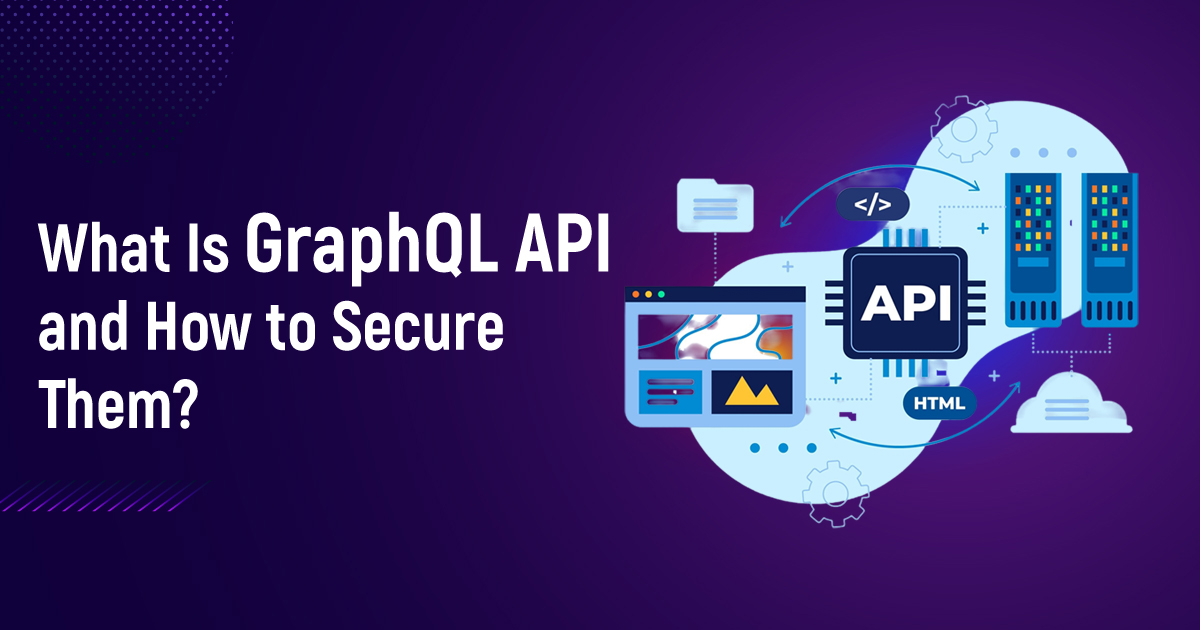GraphQL API security is critical to protecting your application from threats and vulnerabilities. GraphQL, with its simple and efficient data queries, presents unique security challenges that require careful consideration. In this guide, we’ll explore how to secure GraphQL APIs by addressing key security challenges, implementing strong authentication and authorization, and using best practices for schema security, input validation, and more it is included.
Implementing Authentication and Authorization for GraphQL API Security
GraphQL API security begins with strong authentication and authorization mechanisms. Proper authentication ensures that users belong, while effective authorization ensures that users have the correct permissions to access resources.
Best Practices for Authentication:
-
Token-Based Authentication: Use JWT (JSON Web Tokens) for secure, unconditional authentication.
-
OAuth 2.0 Integration: Use OAuth 2.0 to enhance security for third-party applications.
-
Two-Factor Authentication (2FA): Add an extra layer of security for critical performance.
Best Practices for Authorization:
-
Role-Based Access Control (RBAC): Define roles and access to your schema.
-
Field-Level Authorization: Use zone-level analytics to enforce data access rules.
-
Use Scopes: Use scope to limit access to OAuth 2.0 environments.
Securing the GraphQL Schema for API Security
The GraphQL API security policy must include the security of the schema, which is fundamental to how data is requested and modified.
Schema Best Practices:
-
Disable Introspection in Production: Prevent attackers from seeing your system in manufacturing environments.
-
Limit Query Complexity: Use tools like graphql-depth-limit to control query depth.
-
Rate Limiting: Implement rate limitation to prevent abuse and overload.
-
Query Cost Analysis: Analyze and limit the cost of executing queries based on their complexity.
Validating User Inputs to Enhance GraphQL API Security
Effective input validation is essential to mitigate vulnerabilities and ensure the security of the GraphQL API.
Input Validation Techniques:
-
Sanitize Inputs: Use libraries such as DOMPurify to sanitize user inputs.
-
Schema Validation: Use the GraphQL type system to validate input against your schema.
-
Custom Validation Rules: Use customary logic to enforce business rules and prevent unauthorized access.
Preventing Injection Attacks in GraphQL API Security
If the input is not handled properly, injection attacks can compromise GraphQL API security.
Defensive Measures Against Injection:
-
Parameterized Queries: Use parameterized queries or prepared statements to avoid injection vulnerabilities.
-
Sanitize and Escape Inputs: Ensure that all inputs are sanitized and escaped when interacting with databases.
-
Use a Web Application Firewall (WAF): Use WAF to prevent common injection attack patterns.
Protecting Against Denial of Service (DoS) Attacks in GraphQL API Security

GraphQL API security also includes protecting your API from DoS attacks, which can overwhelm your server.
DoS Mitigation Strategies:
-
Query Depth Limiting: Set limits on query depth to avoid resource consumption.
-
Complexity Analysis: Analyze complex question and reject too important questions.
-
Rate Limiting and Throttling: Control the number of requests a customer can make in a given period of time.
Logging and Monitoring for Enhanced GraphQL API Security
Efficient logging and monitoring are important parts of GraphQL API.
Best Practices for Logging and Monitoring:
-
Detailed Logging: Log every request and response with relevant metadata.
-
Real-Time Monitoring: Use tools like Prometheus and Grafana for real-time analysis.
-
Alerting Systems: Set up alerts for unusual activity and potential threats.
Ensuring Secure API Deployment for GraphQL API Security
The deployment environment plays an important role in securing the GraphQL API.
Deployment Security Measures:
-
Use HTTPS: Encrypt data in transit over HTTPS.
-
Environment Variables: Use environment variables to store securely sensitive data.
-
Regular Updates: Update your GraphQL server and dependencies.
Leveraging Security Tools and Libraries for GraphQL API Security
Utilize tools and libraries to enhance GraphQL API security.
Recommended Tools:
-
Graphql-shield: Create permission levels for your schema.
-
Apollo Server Plugins: Add security features to Apollo Server through plugins.
-
Snyk: Snyk to find vulnerabilities in dependencies.
Securing GraphQL APIs
Securing GraphQL APIs requires a multi-pronged approach, with a focus on strong authentication, schema security, input validation, and thorough monitoring. Using these techniques, you can significantly increase the security of the GraphQL API and protect your application from a variety of threats.












